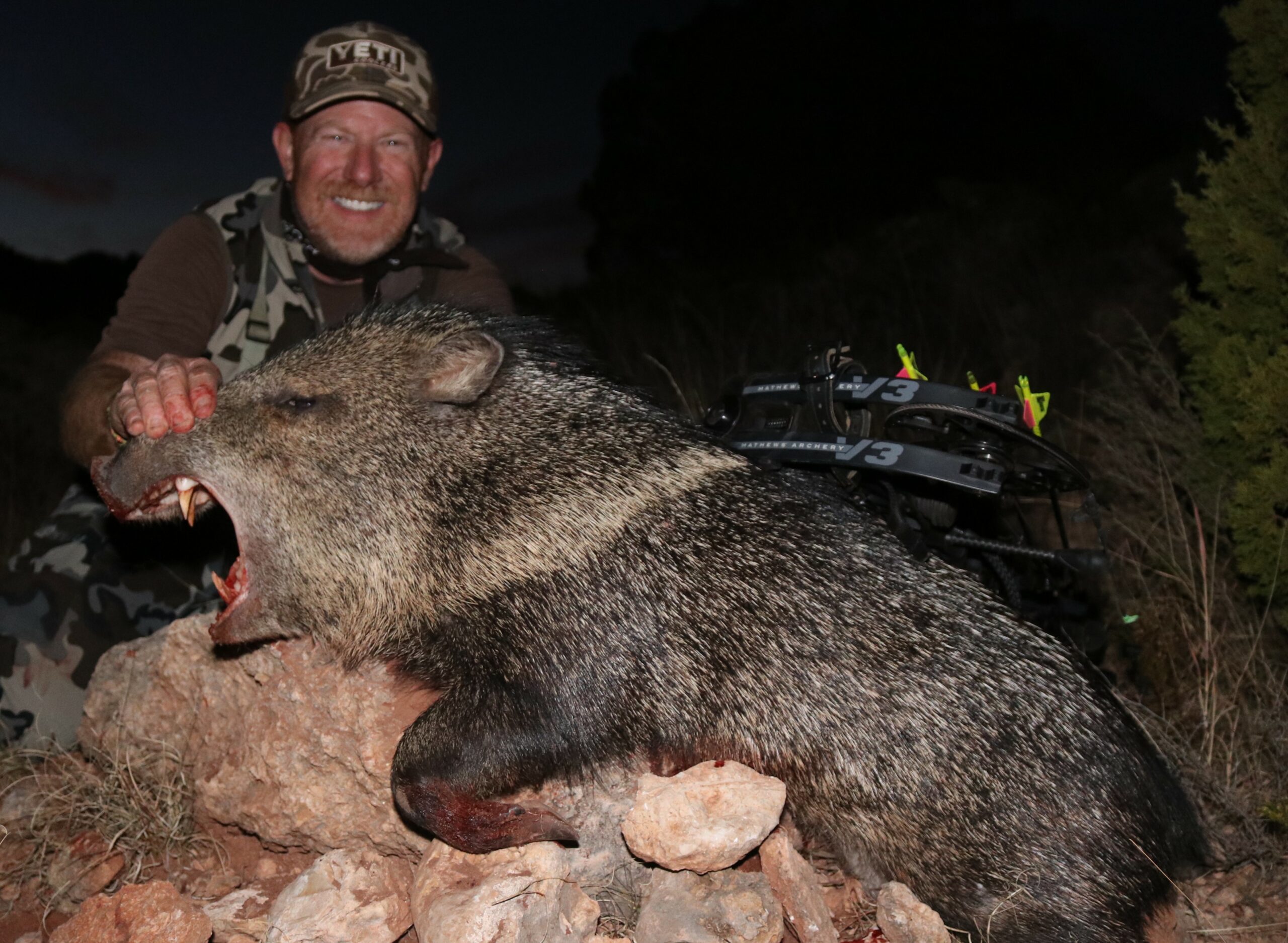
Javelina perfect game for bowhunters
By Brandon Ray
In the old days, 1992 or so, I hunted javelina often. Broke and trying to finish my degree in range and wildlife management from Texas Tech University, I longed for adventure. Javelina hunting was affordable. With a bag limit of two per season, there was sure to be lots of shooting. A group of us struggling college kids made an annual winter trek to the Trans-Pecos to fling arrows. The 3-day, weekend retreat cost $300 per person. We had access to a huge ranch and an old bunkhouse to sleep in. It was heaven.
Javelina were abundant in that rugged country. On most trips, I carried my 50-pound Bear Take-Down recurve. Most years I killed two. In addition to plenty of javelina, we also saw mule deer, aoudad sheep, elk, quail, bobcats and coyotes. The desert was rich with game.
I have fond memories of a single javelina I stalked on a remote, rocky hillside. I closed to under 20 yards then eased my camera out of my daypack. I shot the bristled-up boar with my long-lensed Canon as the sunlight was perfect for good pictures. He huffed and growled, hair on end, as I snapped more images. I doubt he had ever seen a human. Slowly, as he walked behind a large yucca, I traded my camera for my recurve. He walked out broadside at 10 steps. On my knees, I canted my bow almost parallel with the ground to keep a low profile. When the bowstring hit my cheek, I sent a cedar shaft tipped with a file-sharpened Zwickey broadhead through his heart.
On another day, we blood trailed a wounded javelina to a cave on the side of a dry creek bed. The big boar could be seen and heard popping his teeth at the rear of the shallow cave. Not really thinking of what might happen next, my friend launched a finishing arrow into the darkness. When the arrow hit, the boar came barreling out of the cave, missing us both by only a few inches! The big boar flopped over dead just a few yards away. Those winter adventures were a welcome break from books and grumpy professors. I can almost smell the musky scent of those desert peccaries when I replay the memories.
Javelina 101
Javelina or collared peccaries are unique to the desert Southwest. Early Spanish explorers encountered the pig-like animal and gave it the Spanish name “jabeli,” Arabic-Spanish for wild boar or jabalina, Spanish for spear, due to its spear-like teeth. Hence, the common name of javelina by which we know it today. The name collared peccary comes from the ruff of white hair around its neck. They can be found in Arizona, New Mexico, Texas and Mexico.
They usually travel in small herds. They use their sharp teeth to shred and eat desert plants like prickly pear cactus. Both boars and sows have sharp tusks. The only sure way to identify sex on a live javelina is to look closely at the belly line.
Males will have a button halfway between the front and back legs. Adults on average will weigh 35-50 pounds. Anything over 50 pounds is a large javelina. In Texas, the densest population of javelina can be found in the brush country of South Texas and the hills of far West Texas. Huntable numbers can be found in the Hill Country and even the lower Texas Panhandle. The counties with the highest javelina numbers, deep south and far west, allow year-round hunting. Other counties, further north, have a shorter season. The bag limit is two per season. You must have a valid hunting license to hunt javelina. Check the Texas Parks and Wildlife Department website for details on javelina seasons by county name.
Javelina have poor eyesight, which makes them perfect for bowhunters. A javelina’s nose is sharp, but if you can get the wind right, and stalk carefully behind brush, it’s usually possible to get a shot. To locate javelina, glass hillsides and open spaces dotted with cactus. The javelina’s salt and pepper-coloration blends them well in the desert.
Look closely at prickly pear cactus patches. The prickly pear is one of the javelina’s favorite snacks. If a herd is in the area, you’ll see large bite marks and chewed chunks of cactus on the ground. Their tiny hoof prints will also give away their presence. And when you’re still-hunting through likely-looking javelina habitat, pay attention to what you smell. A herd of javelina will give off a musky odor, similar to a skunk.
Spot-and-stalk is my preferred method for javelina, but there are other ways. They will frequent corn feeders. You might also ambush them near water. Finally, they do respond well to a call. You can now buy a javelina specific mouth call or you can use a wounded rabbit call. If you blunder into a herd of javelina and spook them, reach for the call in your pocket and squeal! The sound will mimic that of a wounded baby javelina. You better have an arrow nocked because you just might have the whole herd come charging. It doesn’t work every time, but when it does the action is fast and exciting.



